One of the things I enjoy the most is when I go through my files looking for inspiration and I find something I had forgotten about, impressing me again and making me sigh. Last night, while searching for rooms with geometric rugs, I came across Laudomia Pucci’s home, a estate located in the hills of Florence and I felt like looking at a home that has been published just recently, even when these images were published in W magazine in 2005. The estate dates back from the Renaissance and the “modern, kicked-back glamour” is my favorite feature of this house because it makes the Renaissance architecture warm and comfortable, two of my all time favorites as well. The earthy tones and red throughout the estate also adds to the overall elegant comfort atmosphere.

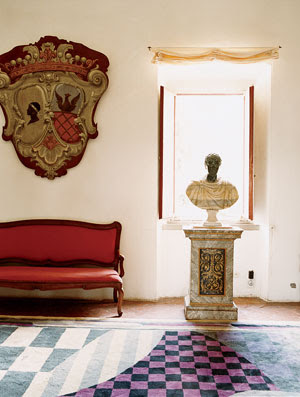
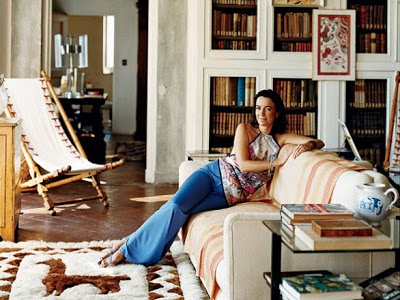
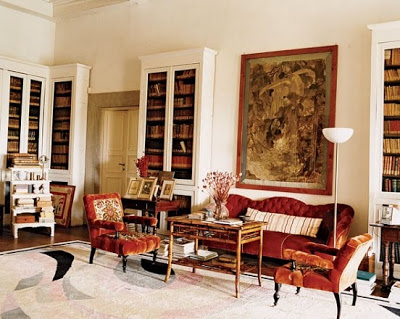
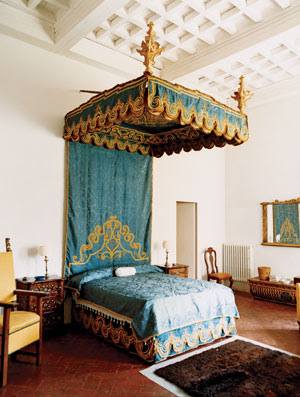
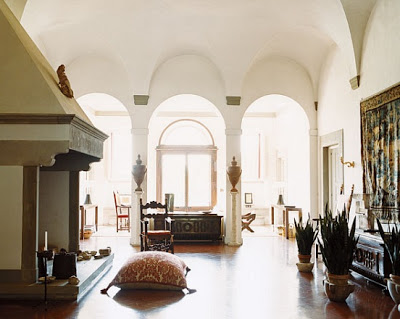
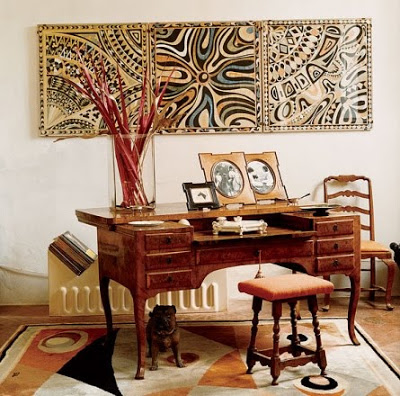
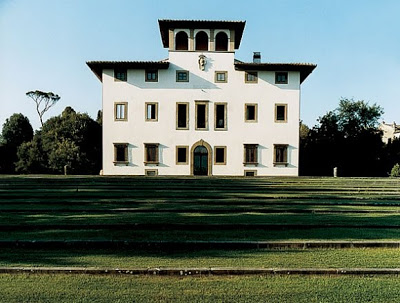
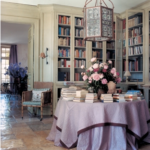

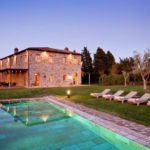

Splendid Sass
Beautiful, Julie!
Hope that you have a Happy New Year!
Teresa
xoxo
Alcira Molina-Ali
How lovely,
Isn't it incredible the way Europeans embody style and grace in their homes?
Hope you have a wonderful New Year's Eve 😉
Cheers, Alcira
Jen
What a wonderful family history and lovely home!
quintessence
I had never seen this – love it!! I could just move right in – do you think she'd mind? or notice!
Splendid Willow
What a villa! What beautiful and timeless rooms with some added playfulness.
Just stopping by to wish you a happy, healthy and fun 2011! I look forward to many fun design chats! You are a gem my friend.
ox, Mon
classic • casual • home
Really extraordinary! Happy New Year.
Mary Ann
Vierotchka
The coat-of-arms is a combination of the Pucci coat-of-arms (to the left) and the Narishkin coat of arms (to the right), as Emilio's grandmother was Varvara Dimitrievna Pucci née Narishkin (born in 1856) who was married to the Marquess Emilio Pucci di Barsento. They were the parents of the Marquess Orazio Pucci di Barsento who was the father of Emilio Pucci (Marquess Emilio Pucci di Barsento) the fashion designer and my cousin, and the grandfather of Laudomia Pucci. So, this dual coat-of-arms was hardly made during the Renaissance, it was made in the latter part of the 19th century.